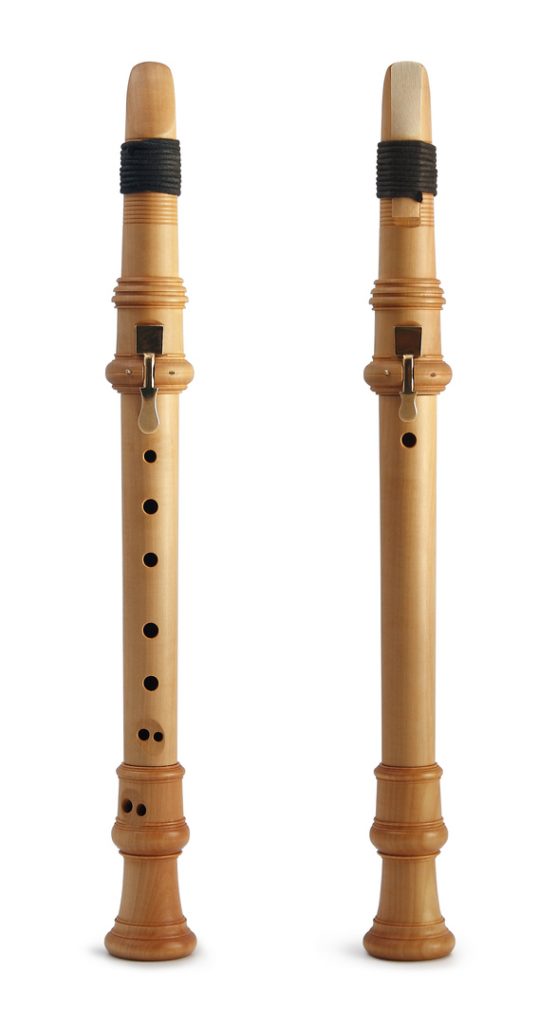Compared to the other instruments like a violin or a flute, the clarinet is a fairly modern instrument. Even among the woodwind instruments, the clarinet is considered to be a very young instrument. The first instrument that resembled a clarinet was called a chalumeau, which was also a single reed cylindrical instrument but it played a little lower. It wasn’t until around the eighteenth/seventeenth century that the chalumeau begin development into something that resembled more like a clarinet with more tonal range. C. H. Denner (1655-1707), who was from Nuremberg, Germany is said to have been one of the earlier figures who tested with chalumeaus and started innovating various ways to improve upon it.

The new instrument, which was then called a clarinetto (due to it sounding like a trumpet), became much more relevant to the Western musical world. The clarinetto was basically an improvement to the chalumeau. It had two or three keys. Even though that might seem little, it helped to facilitate technical runs that might have been otherwise too difficult. It also had a louder tone quality and began to be used more and more in orchestras.
More and more improvements start to be made into the new instrument as the works for the clarinet gets more demanding. The clarinet was also seen to have potential for its beautiful tone to help color the sound of the orchestra better. Various works such as the Mozart clarinet concerto or the Stamitz concerto required solid technical proficiency which made various musicians and inventors to further develop the clarinet. Ivan Mueller, further improved the clarinet by introducing the thirteen keyed clarinet. The addition of extra keys would allow the player technical ease and the ability to produce more tone colors.
This type of clarinet that was used in this time period is more related to the Ohler clarinet that is used widely today. It is known for its beautiful tonal focus. Due to that, it could be seen as inflexible as it is harder to manipulate the sound. The Ohler system is used more in Germany and Europe as it is the clarinet used in the Berlin Philharmonic and other European orchestras. Even though this system has a beautiful sound to it, the fingering is more complicated and could make technical works difficult.
The system of clarinets that the rest of the world uses is called the Boehm system. The Boehm system was created by Theobald Boehm in the mid ninth-teenth century. The two main difference between the Boehm clarinets and the Ohler clarinet (or the German clarinets) are its tone and ease of technicality. Unlike the Ohler clarinets, the Boehm clarinets have a more flexible and lighter sound. You can say that the tonal ideas of the two clarinets were almost opposites. One with a more focused dark sound, and the other with a lighter sound. The keywork was also very different between the two. For the Boehm system, the both pinky would have four keys to make playing easier while the Ohler system had only two on each where there was a roller in the middle you had to slide with your finger if the piece required you to play the other note. It should also be noted that Michele Zukovsky, the former principal clarinet player of the LA Philharmonic, took almost a year to get acquainted with the Ohler system from the Boehm because of its technical difficulty.

All these little inventions and refinement helped to create the modern clarinet. Musicians faced challenges from the technical limits of the instrument which set off the development which would improve the clarinet in various ways such as bettering the tone, tuning, and key work. This would help them play what is required of them and to bring out their artistry and music making.

This is overall a well-written and concise history of the clarinet. I appreciate your emphasis on the betterment of the instrument being an important factor of its development, because it shows what kind of sound musicians have sought for. Therefore, I would really like to see, for example, more details in the comparison between the Ohler system and the Boehm system. It might be helpful for general readers if audio recordings from the two different systems could be attached with your description, or if the description itself could delve a bit more into the nature of two different systems’ sounds.
Your post brings out another interesting question: why did the instrument makers think that their works had made the instrument “better”? What was/is the value in clarinet performance? For example, you have developed a crystal-clear explanation of the two different instrument systems used in modern world, but some research about the reason why this division exists might support your point concerning the making of better clarinets.
That being said, I enjoyed very much from the clarity and focus of your post, and it has especially helped me to understand the different construction systems of the clarinet. Good work!